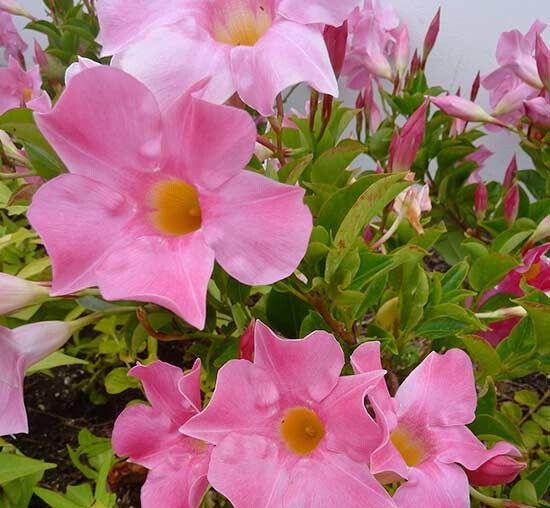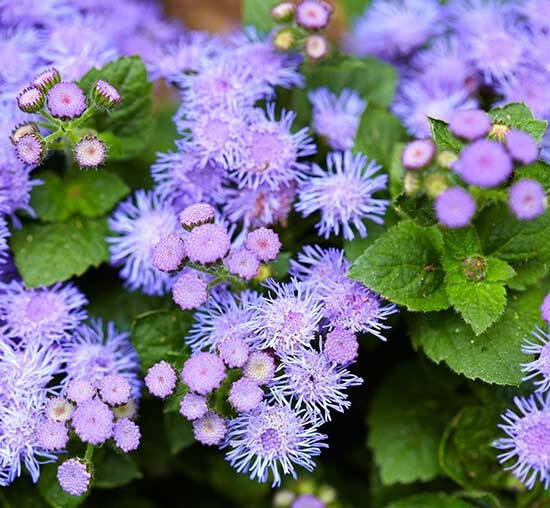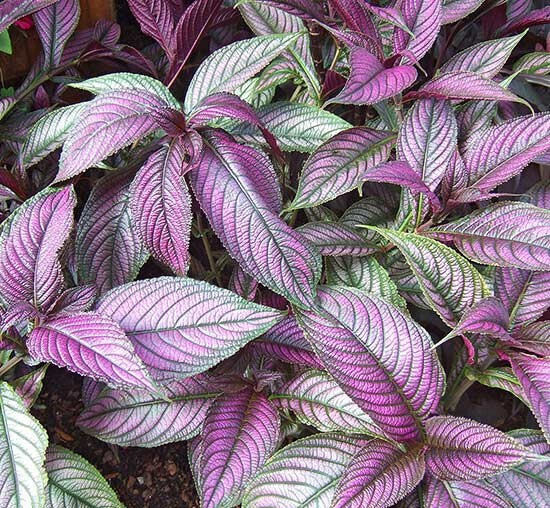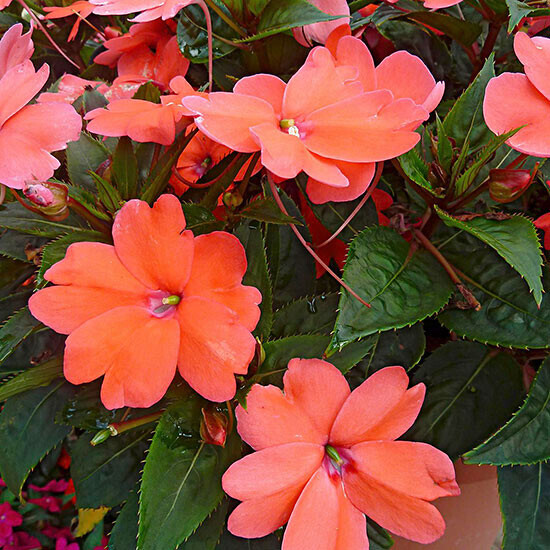Believe it or not, some plants actually like to be hot. While most plants will suffer in the summer when temperatures rise, we're here to talk about annuals that can take the heat—and actually like it!
See our favorite annual plant pairings.
All of these annuals grow well in containers. The smaller the container you use, the easier it will dry out, so be sure to pick a large container for your annuals. For an eye-catching container garden, utilize plants that require the same care but differ in colors, heights, and textures.
Although these annuals beat the heat, they also like to stay hydrated, so give them a drink every other day. Editor's Tip: To know if your pot needs to be watered, stick your finger into the dirt. If the dirt is dry, your pot needs water. If it's not, you can probably wait another day.
Be aware that if you rely on rain to water your plants, the water from the rain will most likely hit the leaves and fall off, rather than dampening the soil. In other words, don't trust that water from rain is giving your plants a decent water supply—a hose will do a better job.
To ensure that your annuals bloom all season, be sure to deadhead blooms that look wilted or dead. This will make room for fresh, new blooms to take their place.
Mandevilla

Mandevilla is an annual vine that doesn't mess around—it can grow up to 20 feet tall! The plant flowers trumpet-shape blooms in shades of white, red, or pink and is identified as a tropical and subtropical plant. Although mandevilla is an annual, it can be overwintered in your home as long as it's kept in a bright, sunny spot.
Ageratum

One of the easiest annuals to grow, ageratum not only takes the heat but also can handle frost. That, plus its pest-resistant qualities, make it the perfect plant for the beginning gardener. Another fun fact about ageratum is that it is one of the few plants in the world that blooms a true, natural blue.
Scaevola

Scaevola is a tough annual native to Australia, so it's no wonder that this plant can take the heat. The plant produces small, fan-like blooms that range from lavender to blue to white. Scaevola looks gorgeous as a cascading plant from pots, baskets, and window boxes. There's no need to deadhead spent blooms, either—scaevola self-cleans and keeps itself in production.
Persian Shield

Persian shield is a leafy plant that thrives in Zones 9 and up and can be overwintered as a houseplant. This captivating plant is an ideal centerpiece in a container with its iridescent purple, green, and black foliage. Persian shield is also deer and rabbit resistant, so you don't have to worry about the colorful leaves falling victim to pests.
Coleus

Coleus puts on a nonstop show throughout the season. There are several different types of coleus, ranging from shade- to sun-loving, single to multi-colored leaves, and different leaf sizes. This easy-to-grow annual thrives in warm weather as long as soil is moist. With coleus, more light equates to more saturated leaves.
SunPatiens

SunPatiens is essentially a sun-loving version of the ever-popular shade annual impatiens. The blooms are ideal for a sunny container garden, and it can be grown as a houseplant in a bright spot indoors. The best part about SunPatiens is that it blooms all season long and can even take on frost!
Licorice Plant

Licorice plant has a soft color and texture, making it a great backdrop to more colorful counterparts in a garden or container. This trailing vine acts as a wonderful "spiller" in a container garden, and its fuzzy leaves protect the plant from pests. In the hot summer sun, this plant may actually give off the smell of licorice, hence its name.